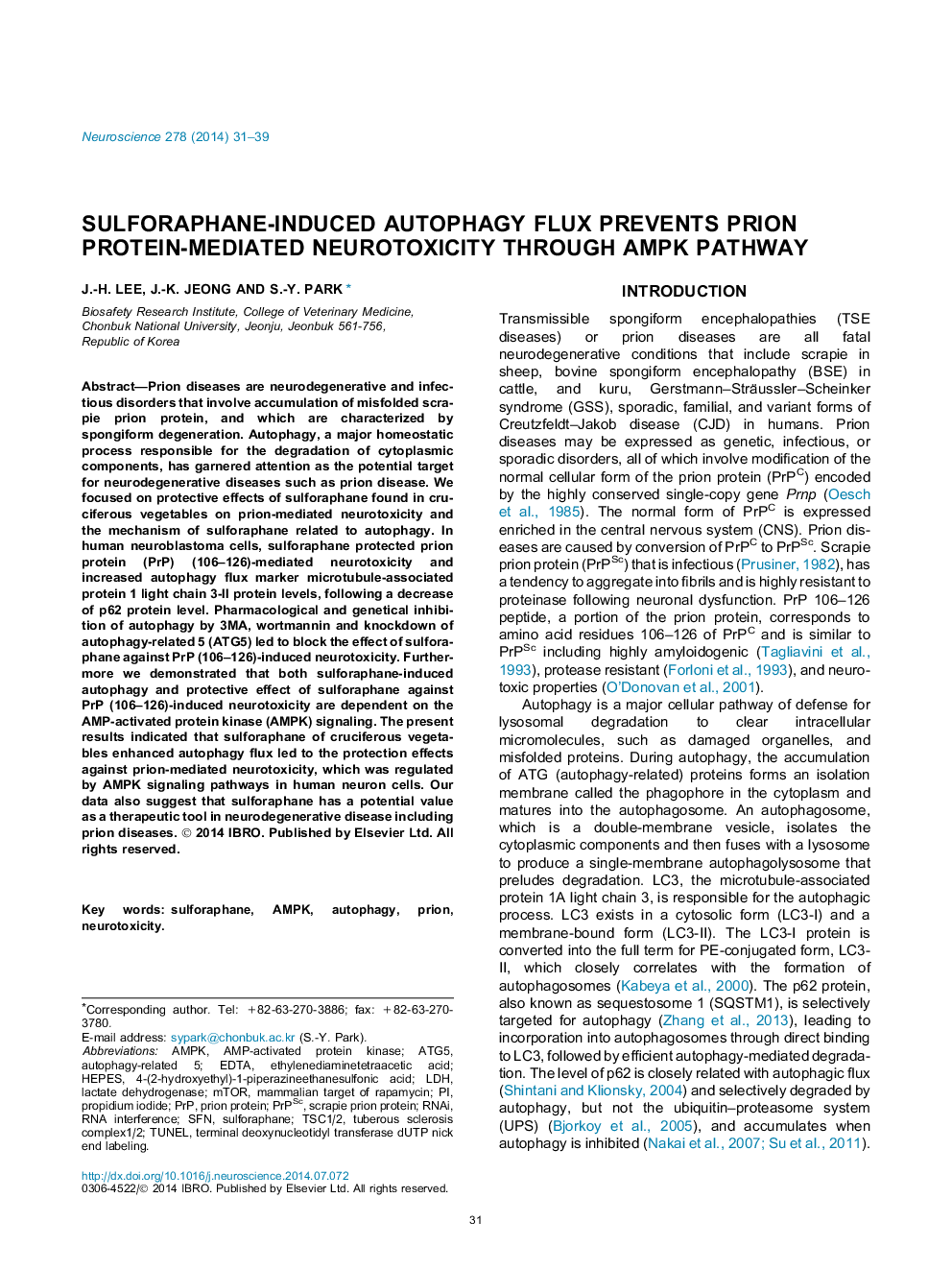| کد مقاله | کد نشریه | سال انتشار | مقاله انگلیسی | نسخه تمام متن |
|---|---|---|---|---|
| 6273730 | 1614798 | 2014 | 9 صفحه PDF | دانلود رایگان |
عنوان انگلیسی مقاله ISI
Sulforaphane-induced autophagy flux prevents prion protein-mediated neurotoxicity through AMPK pathway
دانلود مقاله + سفارش ترجمه
دانلود مقاله ISI انگلیسی
رایگان برای ایرانیان
کلمات کلیدی
AMPKHEPESmTORPrPATG5PrPsc4-(2-hydroxyethyl)-1-piperazineethanesulfonic acid - 4- (2-hydroxyethyl) -1-piperazineethanesulfonic acidAMP-activated protein kinase - AMP-پروتئین کیناز فعال شده استEDTA - اتیلن دی آمین تترا استیک اسید Ethylenediaminetetraacetic acid - اتیلینیدامین تتراستیک اسیدlactate dehydrogenase - لاکتات دهیدروژناز LDH - لاکتات دهیدروژناز به صورت مختصر شده LDH mammalian target of rapamycin - هدف پستانداران رپامایسینPrion protein - پروتئین پریونPropidium iodide - پروتئین یدید
موضوعات مرتبط
علوم زیستی و بیوفناوری
علم عصب شناسی
علوم اعصاب (عمومی)
پیش نمایش صفحه اول مقاله

چکیده انگلیسی
Prion diseases are neurodegenerative and infectious disorders that involve accumulation of misfolded scrapie prion protein, and which are characterized by spongiform degeneration. Autophagy, a major homeostatic process responsible for the degradation of cytoplasmic components, has garnered attention as the potential target for neurodegenerative diseases such as prion disease. We focused on protective effects of sulforaphane found in cruciferous vegetables on prion-mediated neurotoxicity and the mechanism of sulforaphane related to autophagy. In human neuroblastoma cells, sulforaphane protected prion protein (PrP) (106-126)-mediated neurotoxicity and increased autophagy flux marker microtubule-associated protein 1 light chain 3-II protein levels, following a decrease of p62 protein level. Pharmacological and genetical inhibition of autophagy by 3MA, wortmannin and knockdown of autophagy-related 5 (ATG5) led to block the effect of sulforaphane against PrP (106-126)-induced neurotoxicity. Furthermore we demonstrated that both sulforaphane-induced autophagy and protective effect of sulforaphane against PrP (106-126)-induced neurotoxicity are dependent on the AMP-activated protein kinase (AMPK) signaling. The present results indicated that sulforaphane of cruciferous vegetables enhanced autophagy flux led to the protection effects against prion-mediated neurotoxicity, which was regulated by AMPK signaling pathways in human neuron cells. Our data also suggest that sulforaphane has a potential value as a therapeutic tool in neurodegenerative disease including prion diseases.
ناشر
Database: Elsevier - ScienceDirect (ساینس دایرکت)
Journal: Neuroscience - Volume 278, 10 October 2014, Pages 31-39
Journal: Neuroscience - Volume 278, 10 October 2014, Pages 31-39
نویسندگان
J.-H. Lee, J.-K. Jeong, S.-Y. Park,